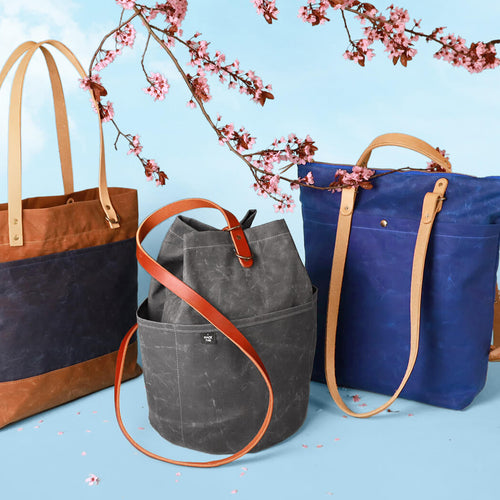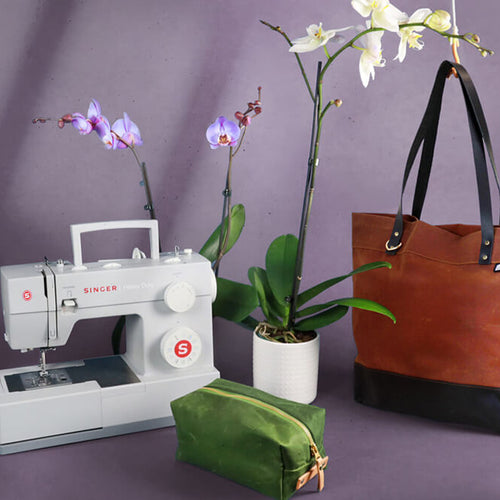
*Ellie Lum is founder and head educator at Klum House Workshop. The following advice is rooted in her 20 years of professional bag design and making experience— two decades of trial and error, experimentation, and learning through making.
Every bag begins as an idea— a spark of inspiration. But going from vision to final product is a long, iterative journey that requires a deep understanding of the design process and your specific end goals. Before you turn on your sewing machine, there are some important design factors to consider.
I think of a maker as a person who both designs and physically produces goods. From a maker's perspective, I’ve come to understand the bag design process as having 4 key elements. All makers should spend time working through these essential design questions to set themselves up for success.

1. Style / Aesthetic
Let's start with the basics. What do you want your finished bag to look like? What is the overall look or feeling you are trying to achieve? What is the silhouette? Is this a petite crossbody purse or a large hiking pack? Is it round or angular? Masculine or feminine? Rustic and outdoorsy or city sleek?
Once you define the look you’re going for, begin thinking about how elements like color, fabric choice, prints, texture, and materials can be used to help you achieve your vision. Are you using natural or synthetic materials? What are your cultural and artistic influences? How does your personal style inform your design and make it unique?
2. Functionality
After you’ve defined the visual aesthetic of your bag, consider how you want the finished bag to function. How your bag works is just as important as how it looks. There’s nothing more frustrating than a bag that malfunctions or is clunky to use.
Ask yourself how you see this bag being used in the world. Does it need to withstand rain and snow? Does it need to fit a laptop? Does it need a key ring or a phone pocket? How does it open and close? Do the straps adjust? Can it be worn in multiple ways?
3. Resources
Before you begin making anything, you’ll need to make sure you have access to all of the resources you need to turn your idea into reality. As a maker, your resources include tools, equipment, materials, money, time, studio space, and production labor.
Do you need an industrial sewing machine or can you make do on a home machine? Where are you sourcing your fabric, buckles, snaps, zippers, etc.? Do you have a place to work? If you plan on hiring contractors to produce for you, where will you find them? Can you afford to pay them?
4. Skill Level
Finally, take an honest look at your own skill set. Do you have the skills necessary to create a finished product or production-ready sample (depending on your end goals)? Do you feel confident creating the bag yourself from start to finish or are their gaps in your knowledge? If so, can you find educational resources online or someone to teach you?




